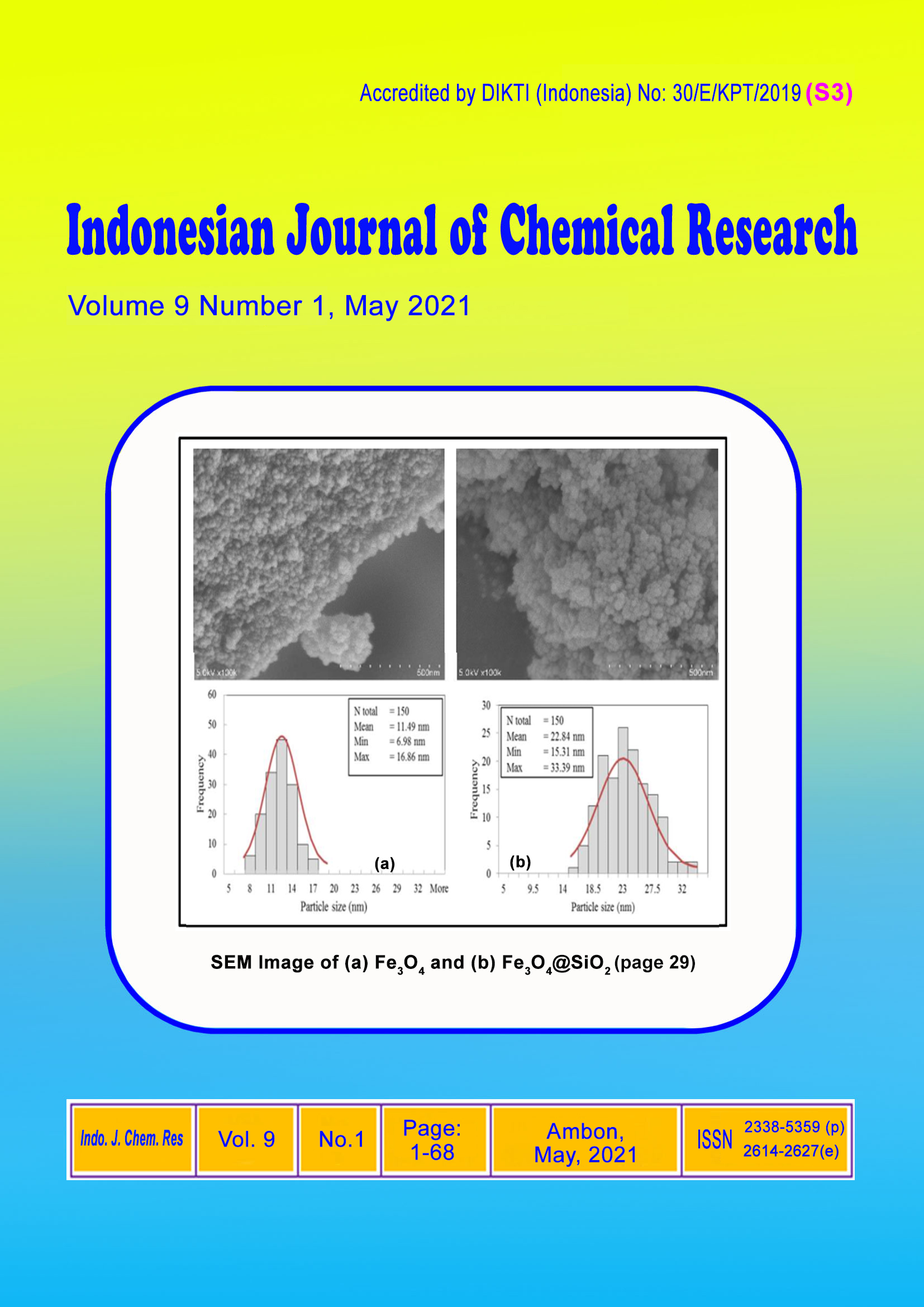Synthesis of Methyl Ester Nitrate from Mahogany Seed Oil (Swietenia mahagoni Linn)
Abstract
Nitration of methyl ester from mahogany oil (Swietenia mahagoniLinn) can be produced by Methyl Ester Nitrate (MEN), an additive that is useful for increasing Cetane Numbers in diesel fuel. This study aims to determine the yield of MEN that can be produced from mahogany seed oil after esterification, trans-esterification, and nitration and to identify the MEN compounds produced. Mahogany oil is obtained by pressing mahogany seeds and then degumming to remove the gum. Mahogany oil-free gum is esterified using methanol with the mole ratio of oil: methanol (1: 6), then trans-esterified, also using methanol with mole ratio (1:15) and a methyl ester is obtained. Then the methyl ester was nitrated with HNO3, sulfuric acid, and acetic anhydride to obtain a translucent reddish colored MEN product with a yield of 24.99%. The success of the synthesis was shown by the FTIR spectrophotometer in the presence of absorption at 1550 cm-1 which indicated the presence of the C-ONO2 group, the absorption at 1365 cm-1 indicated the presence of the NO2 group, and at 1118 cm-1 indicated the presence of the C-N group. The reaction mechanism that occurs during the predicted nitration reaction is an electrophilic substitution reaction and nucleophilic addition.
Downloads
Copyright (c) 2021 Rustam Musta, Laily Nurliana, Muh. Mahatir Halulanga

This work is licensed under a Creative Commons Attribution-NonCommercial-NoDerivatives 4.0 International License.
Authors who publish with this journal agree to the following terms:
- Copyright on any article is retained by the author(s).
- The author grants the journal, the right of first publication with the work simultaneously licensed under a Creative Commons Attribution License that allows others to share the work with an acknowledgment of the work’s authorship and initial publication in this journal.
- Authors are able to enter into separate, additional contractual arrangements for the non-exclusive distribution of the journal’s published version of the work (e.g., post it to an institutional repository or publish it in a book), with an acknowledgment of its initial publication in this journal.
- Authors are permitted and encouraged to post their work online (e.g., in institutional repositories or on their website) prior to and during the submission process, as it can lead to productive exchanges, as well as earlier and greater citation of published work.
- The article and any associated published material is distributed under the Creative Commons Attribution-NonCommercial-NoDerivatives 4.0 International License.






_copy1.png)










